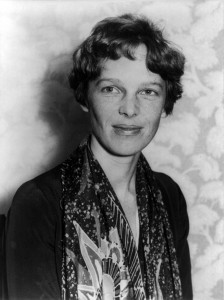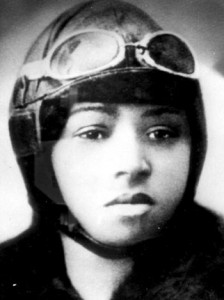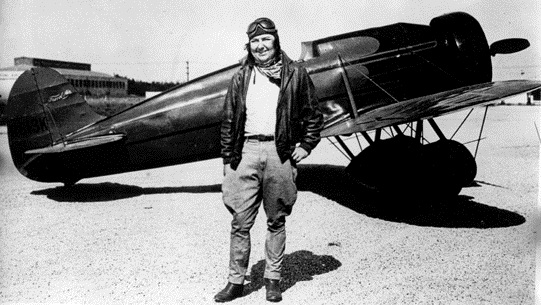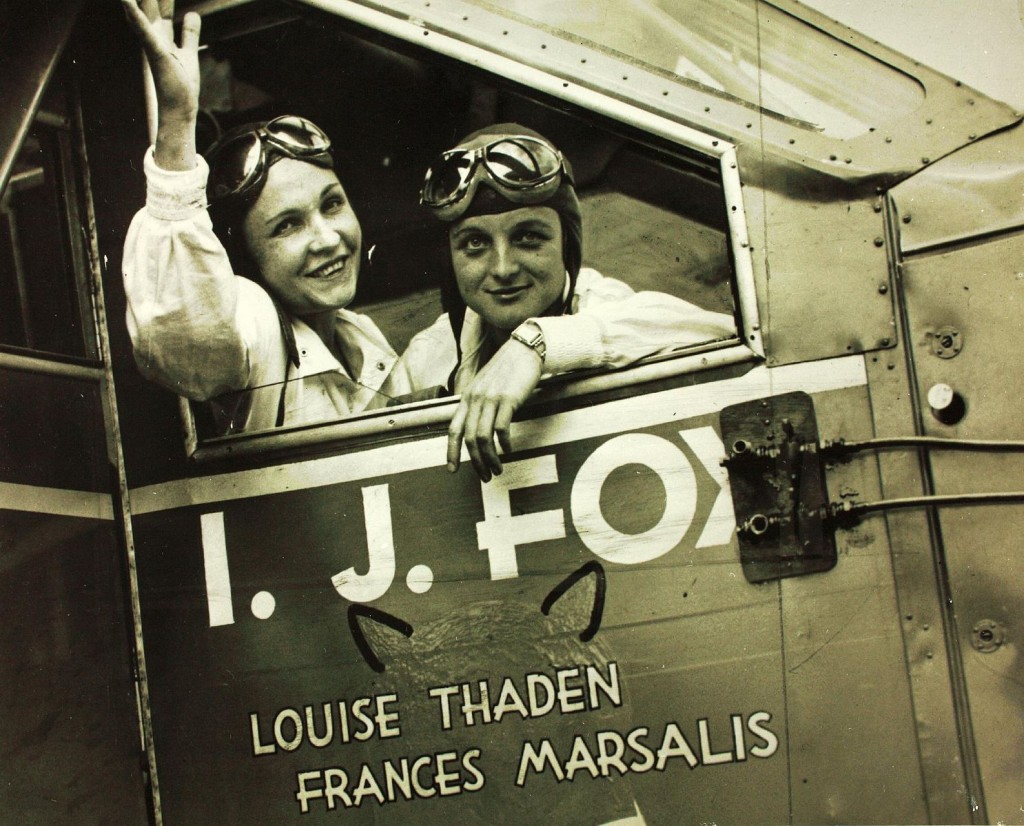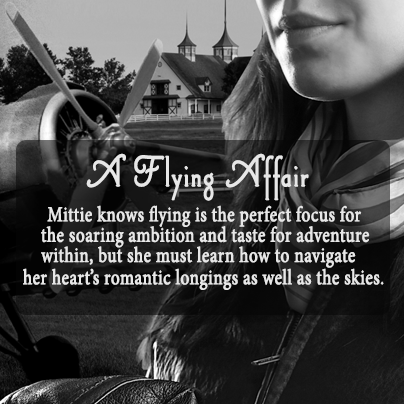 As we inch closer to the release date of A Flying Affair, I’d like to introduce you to some of the “real” women who appear in the book. It’s always my pleasure to sprinkle historical facts into my stories so that you can imagine yourself along with the characters in the Roaring Twenties. Not all of these women appear in the book – you’ll have to read the book to find out which ones do – but they all have their unique place in the history of women in aviation. This post first appeared on the Heroes, Heroines, and History blog that I am a part of.
As we inch closer to the release date of A Flying Affair, I’d like to introduce you to some of the “real” women who appear in the book. It’s always my pleasure to sprinkle historical facts into my stories so that you can imagine yourself along with the characters in the Roaring Twenties. Not all of these women appear in the book – you’ll have to read the book to find out which ones do – but they all have their unique place in the history of women in aviation. This post first appeared on the Heroes, Heroines, and History blog that I am a part of.
The Great War was the first time that airplanes were used so extensively, and when it ended in 1918, manufacturers and the government were left with a surplus of planes no longer needed in the war effort. Since the beginning of time, though, people have yearned to fly so the public was more than ready to buy up the surplus and take to the skies themselves. And surprisingly, a number of women strapped on leather helmets and goggles and climbed into the open cockpits of those early planes. Most were single engine bi-wing planes (Curtiss JN-4 “Jenny” being the most common) with few controls and virtually no regulations in the early days on qualifications for flying them.
Amelia Earhart is probably the most well-known of those early women aviatrixes. She hailed from Kansas where she grew up on a farm riding horses but at age twenty she had her first airplane ride. Before the plane was two hundred feet off the ground, she knew she had to fly. This intense burning inside to conquer the skies is a common denominator for many of the women who flew in those early years. Amelia got her first plane in 1921 and a few months later set a new altitude record of 14,000 feet in her first competition. She went on to place third in the inaugural National Women’s Air Derby (Powder Puff Derby) in 1929. In 1932, she became the first women and the second person in history to fly solo across the Atlantic. Her feat came five years to the day after Lindbergh’s historic flight.
She continued to scale new heights and was an advocate and supporter of other women in aviation. In 1935, she became the first person to fly solo from Honolulu to California, and in 1937, set her sights on becoming the first woman to fly around the world, a journey of 29,000 miles. With only 7000 miles left, contact was lost with the Coast Guard who was monitoring her flight. Amelia’s plane simply disappeared over the South Pacific. Rescue efforts were unsuccessful and eventually called off, but her legacy remains. She would have been 40 years old two weeks after she disappeared.
Many other women also hold esteemed places as pioneers in aviation. Bessie Coleman, an African-American women born to sharecropper parents, attended one year of college in Oklahoma before moving to Chicago. While working as a manicurist, she heard the stories of pilots returning from WWI and longed to fly herself. No American flight schools would accept her because she was a woman and black. She studied French and went to Paris where she became the first American woman to receive an international pilot’s license. She did stunt flying as a means of making a living, but her dream was to open an aviation school for black women. Her dream was never realized. She died when she was thrown from a plane the day before she planned to participate in a parachute demonstration in Florida, but she’s been honored as one who gave a voice and hope to African-American women.
Florence Lowe (Pancho) Barnes was one of the most colorful and passionate of the female aviation pioneers. Born to a wealthy family in California, she was known for flaunting unexpected conventions by often wearing men’s clothing, smoking cigars, and peppering her conversations with foul language. Still, she was a larger than life personality with a generous heart for helping her fellow aviatrixes and was popular in their ranks. She was a barnstormer and stunt pilot and flew in the first National Women’s Air Derby in 1929. Her plane crashed, but she came back to win the following year where she broke Amelia Earhart’s air speed record by flying at 196 mph. In the early thirties, she worked as a Hollywood stunt pilot and established the Associated Motion Picture Pilots’ Union. She’s been the subject of both films and books over the years and started the Happy Bottom Riding Club, a fly-in dude ranch in California.
Another major pioneer figure in women’s aviation was Louise Thaden. She hailed from Arkansas, but while working in an office in Wichita, Kansas, she caught the eye of Walter Beech, an airplane manufacturer who asked her to be a sales rep for his company, if she would move to San Francisco. Part of her salary was flying lessons. While in California, she married an Army Signal Corps pilot and got her own pilot’s license. She won the first National Women’s Air Derby in 1929 in a plane built by the company she worked for. She participated in many competitions for altitude, speed, and endurance and broke records time and again. The first year that women were allowed to compete with men for the Bendix Trophy Race (New York to Los Angeles), she not only won, but also set a new world’s record of 14 hours, 55 minutes. She retired from competing in 1938 and worked with the Bureau of Air Commerce to promote the creation of airfields.
Marvel Crosson, a young pilot from Alaska, also competed in the National Air Derby of 1929. Immensely popular with the other women in the race, it was a sobering moment when Marvel’s plane crashed in the Arizona desert, throwing her from the plane and killing her. It was the only fatality in the race.
Flying was a dangerous calling, but one for which the women who answered the call, would not be thwarted. They were smart, courageous, and leaders on the frontier of aviation. In the words of Amelia Earhart,
“After midnight, the moon set, and I was alone with the stars. I have often said that the lure of flying is the lure of beauty, and I need no other flight to convince me that the reason flyers fly, whether they know it or not, is the esthetic appeal of flying.”
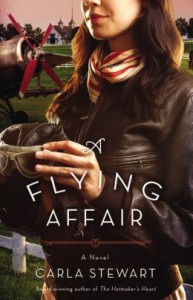 That appeal is part of what inspired me to write A Flying Affair, the story of a high-spirited young woman in the Roaring Twenties where adventure and romance collide in the skies. It’s not too late to PRE-ORDER and get your copy. It releases June 2, and already I’m overwhelmed at the lovely endorsements. It’s for you, dear readers, that I write, and I have to admit, I’m more than a little bit excited about this one.
That appeal is part of what inspired me to write A Flying Affair, the story of a high-spirited young woman in the Roaring Twenties where adventure and romance collide in the skies. It’s not too late to PRE-ORDER and get your copy. It releases June 2, and already I’m overwhelmed at the lovely endorsements. It’s for you, dear readers, that I write, and I have to admit, I’m more than a little bit excited about this one.
See you next week with exciting news about a giveaway!

